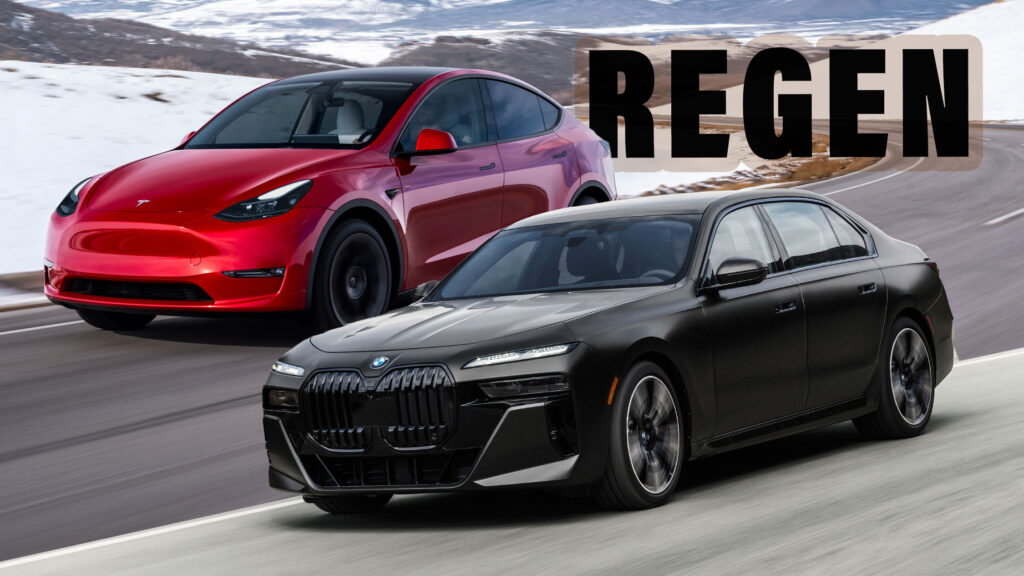It takes a mountain of effort to stop a big, heavy EV from high speed, though unlike ICE-powered cars, electric models can at least recover some of that energy to be used later. But exactly how much energy do they recover when driving down a real mountain? The answer, according to the results of new study, varies widely from one EV to another.
Germany’s ADAC tested three different electric vehicles that together represent the budget, mid-range and luxury segments of the EV market, and found that while the best can recover up to 50 percent of the energy generated during braking, some EVs harness as little as 35 percent.
The BMW i7 claimed top honors in this case, recovering 26.27 kWh on the downhill section of the mountainous Bavarian road route, while Dacia’s cheap and cheerful Spring got the wooden spoon, grabbing hold of only 7.05 kWh of energy. Tesla’s Model Y SUV wasn’t far behind with a 40 percent recovery rating, having harnessed 17.6 kWh.
Recuperation Mountain Roads
The BMW’s winning performance isn’t only down to the superior motor tech you’d expect a car that costs five times as much as the Dacia to have – incredibly, the BMW’s peak downhill recovery charge rate of 55 kW is more than the Dacia can take in at a charging station. It’s also a result of it being much heavier, which means it generates more energy when slowing down.
The Spring tipped the ADAC scales at just 1,180 kg (2,600 lbs), proving that EVs don’t have to be fat, while the Tesla weighed 2,186 kg (4,820 lbs) proving they usually are, and the BMW came in at a gargantuan 2,830 kg (6,240 lbs).
Related: GM Says It Can Use Your Body Heat To Make Its EVs Go Farther
But of course that’s not the whole efficiency story. The Spring’s modest curb weight meant it consumed the least energy getting up the hill, while the BMW gobbled up the most. Combining the total energy consumed on both the uphill and downhill sections of the test route gave the Dacia a consumption figure of 9.65 kWh/100 km (62 miles), the Tesla 15.57 kWh/100 km and the BMW 16.54 kWh/100 km.
The extreme ascents and descents experienced in that mountain test don’t reflect the kind of driving that most EVs are subjected to, so ADAC also completed lab tests on 19 different electric cars to see how they fared under WLTP conditions. The study showed that EVs recover an average of 22 percent of generated energy under braking in this level-ground scenario, but again there were some big differences from car to car. The Nio ET7 scored best, recovering 31 percent of its energy, while the Dacia Spring only recovered 9 percent.
Energy Recuperation Values In WLTP
Source: ADAC




